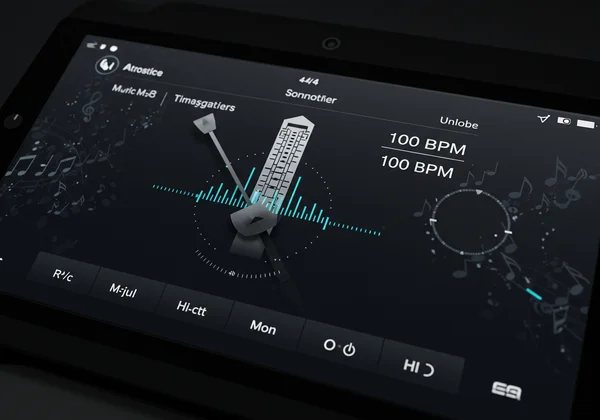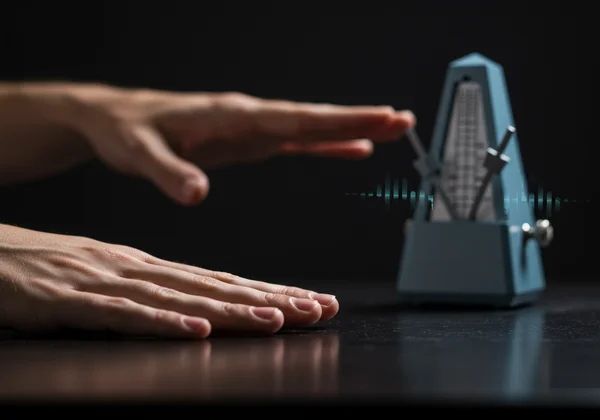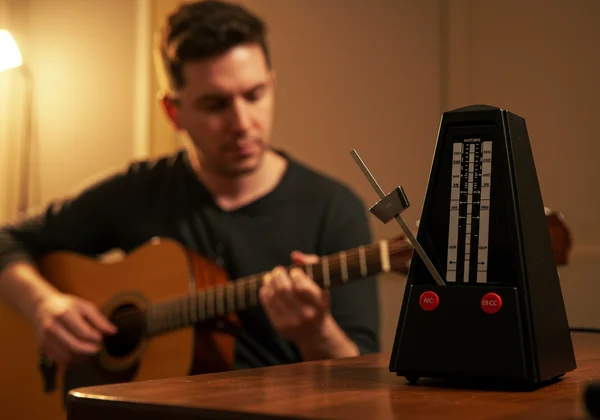Master Rhythm: Your Ultimate Metronome Training Guide
Every musician, from a bedroom guitarist to a concert pianist, shares a common goal: to command rhythm. It's the heartbeat of music, the invisible framework that gives a melody its power and a chord progression its soul. But mastering it can feel like a lifelong quest. Are you ready to transform your timing from hesitant to hypnotic? Let's turn that potential into powerful performance. This complete rhythm training guide is your roadmap, showing you how a simple tool can unlock your deepest rhythmic potential.
Understanding Rhythm Fundamentals: Time, Tempo, & Meter
Before you can run, you must learn to walk. In music, this means mastering the core components of rhythm. These fundamentals are not just theory; they are the language your instrument speaks. A solid foundation here is non-negotiable, and using a reliable free metronome online is the fastest way to build it.
What is BPM and Why is it Essential for Musicians?
BPM, or Beats Per Minute, is the universal measure of tempo—the speed of a piece of music. A song at 60 BPM has one beat every second, while a track at 120 BPM feels twice as fast. Understanding BPM is essential because it provides an objective standard for practice. Instead of vaguely trying to "play faster," you can set a precise goal, like cleanly playing a scale at 110 BPM. Imagine: your practice sessions transformed from guesswork into a focused workout for your fingers and your brain.
Decoding Time Signatures: The Language of Musical Structure
If BPM is the speed, the time signature is the road map. It tells you how many beats are in each measure (the top number) and what kind of note gets one beat (the bottom number). For example, in 4/4 time, the most common signature, there are four beats per measure, and a quarter note gets one beat. Learning to feel different meters like 3/4 (a waltz) or 6/8 (a lilting ballad) expands your musical vocabulary and allows you to play a wider variety of styles with confidence.

Counting Basics: Establishing Your Foundation with a Metronome
The first step to internalizing rhythm is learning to count aloud with a click. It sounds simple, but it’s a game-changer. Head over to our free online metronome, set it to a comfortable 80 BPM in 4/4 time, and press start. As it clicks, count "1 - 2 - 3 - 4" along with it. Make sure your "1" always lands on the accented beat. This exercise connects the auditory click to your internal sense of pulse, creating a solid foundation for everything that follows.
Developing Your Inner Clock: Intermediate Metronome Techniques
Once you're comfortable with the basics, it's time to challenge your internal clock. The goal is to move beyond simply following the click and start truly feeling the time yourself. These intermediate exercises are designed to make the metronome your training partner, not a crutch.
Mastering Subdivisions: Adding Nuance to Your Rhythm
Music rarely happens just on the main beats. The real magic is in the subdivisions—the notes between the clicks. Our online metronome allows you to select eighth notes (two notes per click), sixteenth notes (four notes per click), or even triplets. Practice switching between these subdivisions without losing the main pulse. This will dramatically improve your precision and enable you to play the syncopated, funky, and complex rhythms that make music exciting.

Exploring Polyrhythms: Layering Complex Rhythmic Patterns
Ready for a real brain-teaser? Polyrhythms involve playing two different rhythmic patterns simultaneously, like a 3-against-2 pattern. While it sounds complex, a metronome can simplify the process. Set your metronome to a slow tempo. Tap a steady pattern of three with your right hand (1-2-3, 1-2-3) while tapping a pattern of two with your left hand (1-2, 1-2), ensuring the "1" of both patterns lands on the click. This exercise will rewire your brain and give you a new level of rhythmic independence.
Silent Practice & Phrasing: Internalizing Rhythm Beyond the Click
This is the ultimate test of your inner clock. Set your metronome to play for one measure and then be silent for the next. Your challenge is to continue playing in perfect time during the silent measure and land perfectly back on the "1" when the click returns. Start with one silent bar, then try two, then three. This forces you to internalize the tempo, transforming the metronome from an external guide into a part of your own musical feel.
Elevating Your Musicality: Advanced Rhythm, Groove & Feel
Perfect timing is one thing; making music that feels incredible is another. This is where we move from mechanical precision to true musicality. The metronome isn't just for playing "correctly"—it's a tool for exploring the subtle art of groove and feel.
Playing "In the Pocket": The Art of Rhythmic Placement
"In the pocket" is a term musicians use to describe a rhythm that feels perfectly locked-in and unshakably solid. It’s not just about being on time; it's about the quality of that time. To practice this, try to make your note attack perfectly align with the metronome's click so they sound like a single event. Then, experiment by playing ever-so-slightly behind the beat (for a laid-back feel) or ahead of it (for an urgent feel). This subtle control over your rhythmic placement is the secret to a professional groove.

Finding Your Swing: Demystifying Jazz Rhythm with a Metronome
Swing rhythm is the foundation of jazz, and it can be tricky to master. Instead of playing eighth notes evenly, the first is held longer than the second, creating a "long-short" or "doo-BA" feel. A metronome with a triplet subdivision setting is your best friend here. Set the click and play triplets, but only play the first and third notes of each triplet group. Voila! You have a perfect swing feel. Practicing this will make your jazz lines bounce and your blues licks feel authentic. Why not start your practice now?
The Songwriter's Rhythm Guide: Tempo & Structure for Composition
For songwriters, a metronome is an indispensable creative partner. Before you even write a melody, you can use our Tap Tempo feature to find the perfect BPM for the emotion you want to convey. Is it a slow, heartbreaking ballad (around 65 BPM) or an upbeat, energetic pop song (around 120 BPM)? Using a metronome while composing ensures your song has a consistent, professional-sounding rhythmic foundation from the very beginning, making the recording process infinitely smoother. Set your BPM and see where your ideas take you.
Ready to Master Rhythm? Start Your Journey Today!
You've explored the foundations of rhythm, learned intermediate techniques, and discovered advanced ways to groove. Now, it's time to put these insights into practice and make rhythmic mastery your reality. The journey requires patience and consistent practice, but the rewards are immeasurable. A strong sense of rhythm will elevate every note you play, transforming your performance from good to unforgettable.
The most powerful tool for this journey is right at your fingertips. Don't just read about it—do it. Head over to our free online metronome, set your first tempo, and take the first step. Your future as a confident, rhythmically solid musician starts with a single click.

Frequently Asked Questions About Rhythm & Metronome Practice
What is an ideal tempo for effective practice sessions?
There's no single "best" tempo, but the golden rule is to start slow—slow enough that you can play a passage perfectly without tension. A range of 60-80 BPM is often a great starting point for learning new material. The goal is accuracy first, then you can gradually increase the speed using our simple metronome as you build muscle memory.
How can beginners best utilize a metronome for improved timing?
For beginners, the key is consistency. Use a metronome for every practice session, even for just five minutes. Start by clapping or tapping along with the click to internalize the pulse. Then, apply it to simple scales and chords, focusing on making every note land precisely on the beat. This builds an unbreakable foundation of perfect timing.
How does consistent metronome use enhance overall musical performance?
Consistent metronome practice builds your "inner clock," giving you a reliable sense of time that translates directly to performance. When playing with other musicians, you'll be able to lock in with them more easily, making the entire band sound tighter and more professional. It also builds confidence, as you'll know your timing is solid, freeing you up to focus on expression and emotion.
Can a metronome assist in determining a song's beats per minute (BPM)?
Absolutely. Our online metronome includes a "Tap Tempo" feature specifically for this. Simply listen to the song and tap along to the beat on the designated button. The tool will calculate the average BPM for you, which is incredibly useful for learning to play your favorite songs accurately.